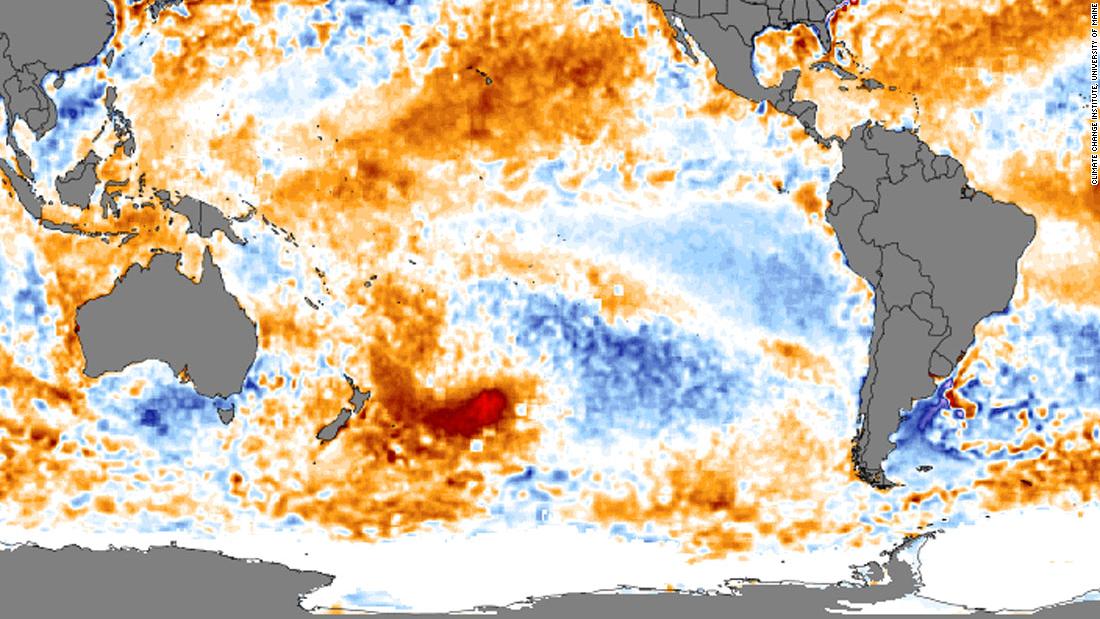
The water in the area is about 5 degrees Celsius (about 9 degrees Fahrenheit) "warmer than average for the latitude and time of year," said James Renwick, a professor and head of the School of Geography, Environment and Earth Sciences at Victoria University in Wellington, New Zealand.
The hot blob on the Pacific surface is detectable from space and is the largest area of above-average water temperature on Earth right now.
The patch of sea is about a million square kilometers (400,000 square miles), covering an area of ocean larger than the size of Texas.
"The ocean surface doesn't vary that wildly," Renwick said. "One degree (Celsius) is big. So, five degrees is huge."
It's especially rare to see over such a large area, but scientists say global climate change is making these phenomena more common.
Warm spot caused by recent weather
"The ocean surface does what the air above tells it," Renwick said.
That area has received a lot of sunshine, and there's been a lack of westerly wind to blow area away the warm area hovering above the sea surface, he said.
The water appears as a large red splotch on a satellite map created by the Climate Reanalyzer operated by the Climate Change Institute at the University of Maine. That map charts the world's ocean surface temperature.
"If it's warm somewhere, it may be cold somewhere else," Renwick said. Just east of the abnormally warm area, the water is about 3 degrees Celsius (5.4 degrees Fahrenheit) cooler than then average.
"There's quite a cold patch," he said.
It's not clear how deep the warm area is, but Renwick estimated it didn't go down further than two dozen meters, as it would take an enormous amount of energy to heat up such a large volume of water over a few weeks.
These warm blobs happen at various points around the world's oceans. A few months ago, oceanographers observed a similar warm patch of ocean off Alaska, which Renwick attributed to the loss of Arctic sea ice.
Global climate change is driving trend of maritime heat waves
The heat wave has had a direct effect on the aquatic ecosystem there, with many fish highly sensitive to even small temperature changes.
"Marine life will have become adaptive," Renwick said. "So other species that like warmer water will have moved in."
Past marine heat waves have caused mass death of marine invertebrates, coral bleaching and the sustained loss of kelp forests, according to a 2018 study in the journal Nature.
That study showed that from 1925 to 2016, there was a 54% rise in the number of marine heat wave days each year. That was because heat waves were increasing in both frequency and in duration, with the highest level of maritime heat wave activity occurring in the North Atlantic.
Between 1982 and 2016, scientists saw a more alarming trend as the number of heat wave days on the global ocean surface had increased 82%.
The article said the data could "largely be explained by increases in mean ocean temperatures, suggesting that we can expect further increases in marine heatwave days under continued global warming."
Bagikan Berita Ini














0 Response to "There's a Texas-size area of hot sea water off the coast of New Zealand"
Post a Comment